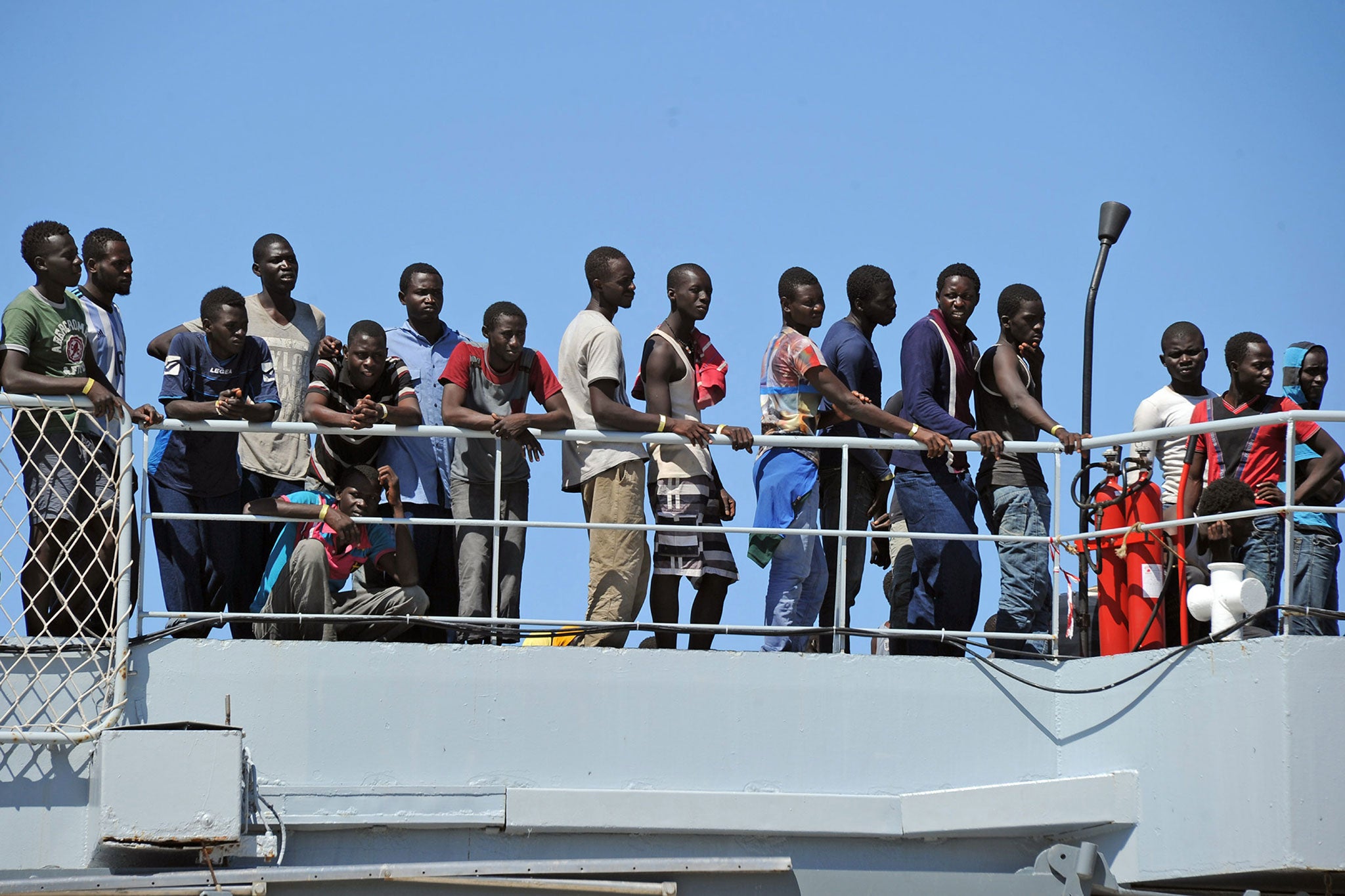Italy’s decision to end Mare Nostrum will put the lives of thousands of migrants and refugees at risk
Last month, 500 migrants were deliberately killed at sea. The traffickers laughed as their customers flailed and drowned before their eyes


Your support helps us to tell the story
From reproductive rights to climate change to Big Tech, The Independent is on the ground when the story is developing. Whether it's investigating the financials of Elon Musk's pro-Trump PAC or producing our latest documentary, 'The A Word', which shines a light on the American women fighting for reproductive rights, we know how important it is to parse out the facts from the messaging.
At such a critical moment in US history, we need reporters on the ground. Your donation allows us to keep sending journalists to speak to both sides of the story.
The Independent is trusted by Americans across the entire political spectrum. And unlike many other quality news outlets, we choose not to lock Americans out of our reporting and analysis with paywalls. We believe quality journalism should be available to everyone, paid for by those who can afford it.
Your support makes all the difference.The whole region is in disarray, the Arab Spring having brought only chaos, disaster and war, but there is still money to be made along the Mediterranean’s war-torn coast.
What desire do the Yazidis of Iraq and the Palestinians of Gaza share with millions of Syrians and practically the entire remaining populations of Somalia and Eritrea? The desire to get out. To leave the destruction, poverty, fanaticism and war as far behind as possible. Heading almost anywhere, as long as it is north.
So for those who can provide the service – the people-traffickers of Libya in particular – business is booming as never before. Their customers pay at least $2,000 (£1,250) for the passage, and often much more. It’s a business worth $1bn a year, according to a recent estimate. A complex and well-oiled network transports the would-be migrants from the tunnels of Gaza, the suburbs of Tripoli and the many other places from which they emerge after long, gruelling journeys to the port of Zuwara, a couple of hours’ drive west from Tripoli on the road to the Tunisian border.
Zuwara has been a centre of the trade for many years. When I visited it a few years back, the docks rang to the sound of hammers as crude wooden boats were bashed into shape. There was no need for the boats to be other than crude: they were only meant for a single one-way voyage, if that. Mercedes cars and shops stacked with high-end liquor and chocolates hinted at the wealth of the local residents.
Muammar Gaddafi used the flow of migrants from his coasts across the Mediterranean as a bargaining chip in his long, drawn-out negotiations with Italy, Libya’s former colonial master. In 2008, Prime Minister Silvio Berlusconi agreed to pay $5bn in war reparations over 25 years. In return, Colonel Gaddafi agreed to control the numbers leaving for Europe.
His efforts were not impressive: in that year 30,000 sea-borne migrants made it to Italy. But in the past year more than five times that number has arrived – 160,000 people. That enormous figure is in a sense to Italy’s credit. One year ago, as readers may recall, the sinking of one of the leaky tubs killed 366. The world was briefly appalled and the Italian government launched the operation Mare Nostrum (Our Seas) to prevent more such tragedies, using naval and coastguard boats to scour the sea for boats in similar peril. Of this year’s arrivals, 90,000 were rescued by the Italians.
But this magnificent effort, sanctified by a visit by Pope Francis to Lampedusa, the island south of Sicily where many of the migrants wash up, is about to be terminated, according to the Interior Minister Angelo Alfano.
One can understand why. It is unsustainable. It is immensely costly. Italy struggled to process the far smaller numbers arriving in earlier years and is now inundated, incubating social problems of every sort. The very fact that the Italians have been busy looking for boats in trouble – thus making the transit slightly less risky than in the past – may have been a factor in the explosion of numbers. In the past the trade was seasonal: today the boats are taken out to sea in all weathers by their cynical traffickers. So far this year more than 3,000 have drowned.
Last month, 500 migrants were deliberately killed at sea. After being decanted twice to smaller and even more crowded boats, the passengers protested against this. Soon afterwards a larger, more seaworthy ship appeared and deliberately rammed the migrants’ boat until it sank. The traffickers laughed as their customers flailed and drowned before their eyes. Only a handful survived.
Amnesty International condemned Italy’s decision to end Mare Nostrum, saying it would “put the lives of thousands of migrants and refugees attempting to reach Europe at risk”. The substitute is the EU’s Frontex Triton operation, but unlike the Italian initiative, which extends across the sea, Triton only patrols up to 30 miles from the coast.
Mare Nostrum, however compassionate its motivation and valuable its rescue work, was never a cure. The trade itself is an evil one, destroying thousands of lives, dumping tens of thousands of traumatised people with no documents and no prospects to fester on the outskirts of Europe’s cities, turning asylum application into a brutally Darwinian process and further poisoning European sentiment about immigration. International efforts have succeeded in drastically curtailing Somalian piracy because of its impact on the profits of big multinational companies. Do the lives of thousands of Africans thrown away at sea by vile profiteers really mean so little that we are prepared to allow this trade to continue?
Join our commenting forum
Join thought-provoking conversations, follow other Independent readers and see their replies
Comments